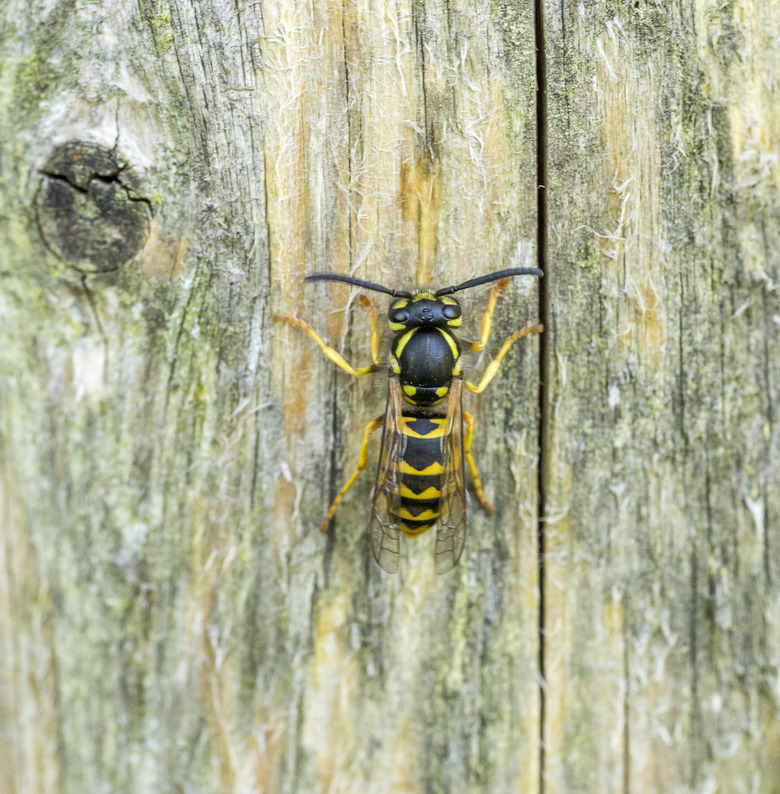Wasps That Fly At Night
The typical image of a wasp is a yellow and black striped menace with a painful sting. While many wasps that fit that description, there are thousands of others with varying sizes, shapes, colors and behaviors, including wasps that fly at night. Some nocturnal wasps are parasitic, laying their eggs on or near night-feeding caterpillars or other hosts. Others search for nocturnal insects such as moths and crickets to feed to their young larvae.
TL;DR (Too Long; Didn't Read)
Wasps that fly at night include European hornets and wasps from the Apoica genus, and the Ichneumonidae and Brachonidae families.
Insect Night Vision
Insect Night Vision
Insects have compound eyes made up of several individual parts called ommatidia. Many also have three small individual visual organs called ocelli on the top of their head. Nocturnal insects tend to have adaptations in their compound eyes and ocelli that enable them to see and fly at night, with European hornets as a notable exception.
European Hornets
European Hornets
A large, widely distributed group of common, social wasps known as Vespidae create papery nests for their young. Unlike other vespid wasps like yellowjackets and hornets that are active during the day, the European hornet (Vespa crabro) is capable of flying at night. It searches for grasshoppers and other insects or ripening fruit to feed to its young. This large wasp is approximately 1 inch long and has reddish-brown coloring on its head and upper body. Because of its large body size and thus its large eyes, European hornets don't require any of the special visual adaptations that other nocturnal insects possess to be able to see at night.
Apoica Wasps
Apoica Wasps
Like European hornets, wasps in the genus Apoica belong to the Vespidae family and have true nocturnal behavior. Apoica wasps gather around the entrance to their nest during the day to protect the larvae inside from predatory insects. With the help of adaptations in their ocelli, Apoica wasps are able to forage for food at night.
Ichneumonid Wasps
Ichneumonid Wasps
With slender bodies and sometimes very long egg-laying organs called ovipositors, ichneumonid wasps (Ichneumonidae) can look threatening, but most species do not sting. These parasitic wasps vary in size, color and pattern depending on the species. Adults lay eggs onto a host insect, often a caterpillar or spider, and the larvae feed off that host. Several species of of this group are nocturnal.
Braconid Wasps
Braconid Wasps
Typically black or brown in color but varying in size, braconid wasps (Braconidae) are parasites of many insects, particularly the larvae of moths and butterflies. Several species are attracted to lights while the insects are out searching for hosts at night. Their enlarged eyes and ocelli assist them in nocturnal foraging.
Cite This Article
MLA
Godawa, Jean. "Wasps That Fly At Night" sciencing.com, https://www.sciencing.com/wasps-fly-night-8155132/. 11 April 2018.
APA
Godawa, Jean. (2018, April 11). Wasps That Fly At Night. sciencing.com. Retrieved from https://www.sciencing.com/wasps-fly-night-8155132/
Chicago
Godawa, Jean. Wasps That Fly At Night last modified March 24, 2022. https://www.sciencing.com/wasps-fly-night-8155132/
